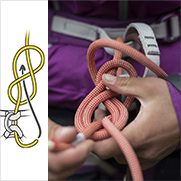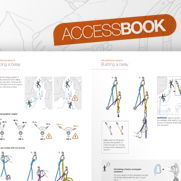ASAP usage when approaching an obstacle or the ground
Warnings
- Carefully read the Instructions for Use used in this technical advice before consulting the advice itself. You must have already read and understood the information in the Instructions for Use to be able to understand this supplementary information.
- Mastering these techniques requires specific training. Work with a professional to confirm your ability to perform these techniques safely and independently before attempting them unsupervised.
- We provide examples of techniques related to your activity. There may be others that we do not describe here.
Clearance is the minimum amount of clear space under the ASAP that is required to prevent the user from coming into contact with an obstacle in the event of a fall.
1. Variations in user weight
For an 80 kg user, the difference in clearance is around 5 cm (to be subtracted from the value given for 100 kg).
For a 140 kg user, the difference in clearance is around 15 cm (to be added to the value given for 100 kg).
Warning: the weight of the user is always understood to include the weight of his equipment.
2. Do not disregard rope stretch (E)
Rope stretch adds a variable to the clearance, which depends on the distance from the anchor.
Only the user can evaluate the stretch, depending on the situation and his equipment.
The value of elongation under static load is covered by the EN 1891 standard: it must be less than 5 %.
Even so, the elongation during a fall is not precise, and varies between rope models.
For example, if we propose a dynamic elongation value of 10 %:
- At 10 m from the anchor, 1 m must be added
- At 50 m from the anchor, 5 m must be added. In this case, an intermediate anchor is recommended for the rope above, when possible, to limit elongation
3. Deliberately locking the ASAP in a high position
At the work station, the ASAP will naturally slide down the rope to a point below the fall arrest attachment point.
Use the ASAP LOCK's locking function if you are operating close to the ground or an obstacle, to optimize clearance.
The ASAP B71 and ASAP B71 AAA models have no locking function. It is possible to deliberately lock them by a quick downward pull, to keep them in a higher position. Apart from cases where user safety is at stake, this deliberate locking is not recommended, as repeated deliberate impacts can accelerate wear of the ASAP, and a simple involuntary movement can unlock it without the user's knowledge.
4. Monitor the rope tension
Close to the ground, with little rope weight, it is important to make sure the rope is properly sliding through the ASAP, to avoid creating a loop of slack that can increase the potential fall distance.
5. Examples of solutions to optimize the ASAP's position during progression
| ASAP over the shoulder or arm | ASAP positioned by velcro on the AVAO harness | |
| ASAP over the shoulder or arm | |
| ASAP positioned by velcro on the AVAO harness | |
| ASAP positioned by velcro on the AVAO harness |
| ASAP over the shoulder or arm |
| ASAP positioned by velcro on the AVAO harness |
| ASAP positioned by velcro on the AVAO harness |






